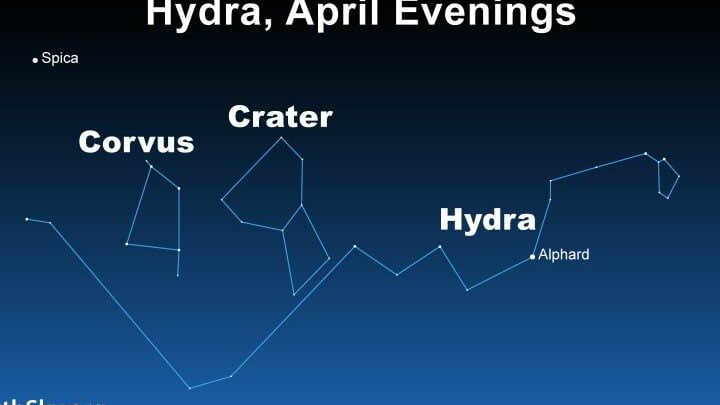
The Southern Hydra constellation can be found in the southern hemisphere of the sky. It is ranked 61st among all constellations, covering an area of 243 square degrees. It shares its vicinity with several other constellations, including Goldfish, Octanthus, Grid, Table Mountain, Toucan, Phoenix, Clock, and Eridanus.

A brief overview of the history of the Southern Hydra constellation
To begin with, the Southern Hydra constellation is a relatively recent addition to the night sky. It was not recognized until the 16th century when it was proposed by Peter Plancius and officially introduced by Johann Bayer.
You may be wondering why this area is named as such, especially considering that there is already a constellation called Hydra in the southern hemisphere. Firstly, the term “southern” indicates its location in the southern sky. Secondly, the area bears resemblance to its larger counterpart. In a figurative sense, the name translates to “male water snake.”
Just so you know, the constellation Southern Hydra was among the earliest ones established by Plancius. It came about through the observations made by sailors. It’s worth noting that there is no mythological basis for its origin.
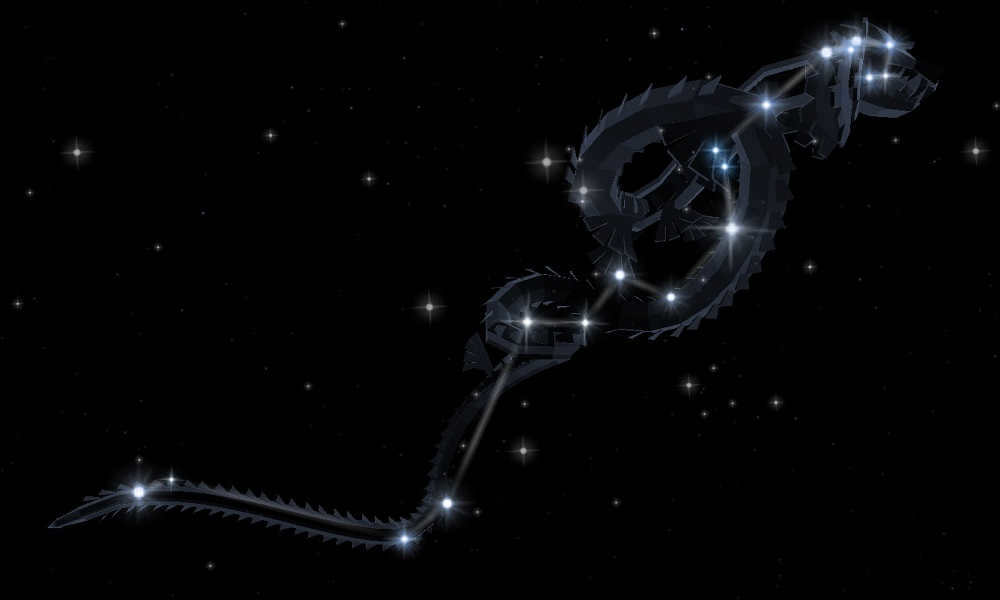
Stars that form the constellation Southern Hydra
It turns out that there are 32 stars that can be seen on the site with the naked eye.
Unlike many constellations, the brightest star in Southern Hydra is Beta. This yellow subgiant is the closest star to our system and has a luminosity of 2.8. It is also the oldest star in the solar neighborhood.
Coming in second in terms of visual magnitude (2.9) in the region is Alpha. It is also a subgiant, but it has a yellow-white color.
In third place with a magnitude of 3.24 is the star Gamma of the Southern Hydra. It is a bright red giant.
Delta and Epsilon are dwarfs with an average brightness of 4.07. Another star with similar characteristics is HD 10180, but it has an apparent magnitude of 7.33.
Nu and Eta-2 are massive stars, with an average apparent magnitude of 4.7.
Zeta is a white star that is evolving between a subgiant and a dwarf. It has an apparent magnitude of 4.83.
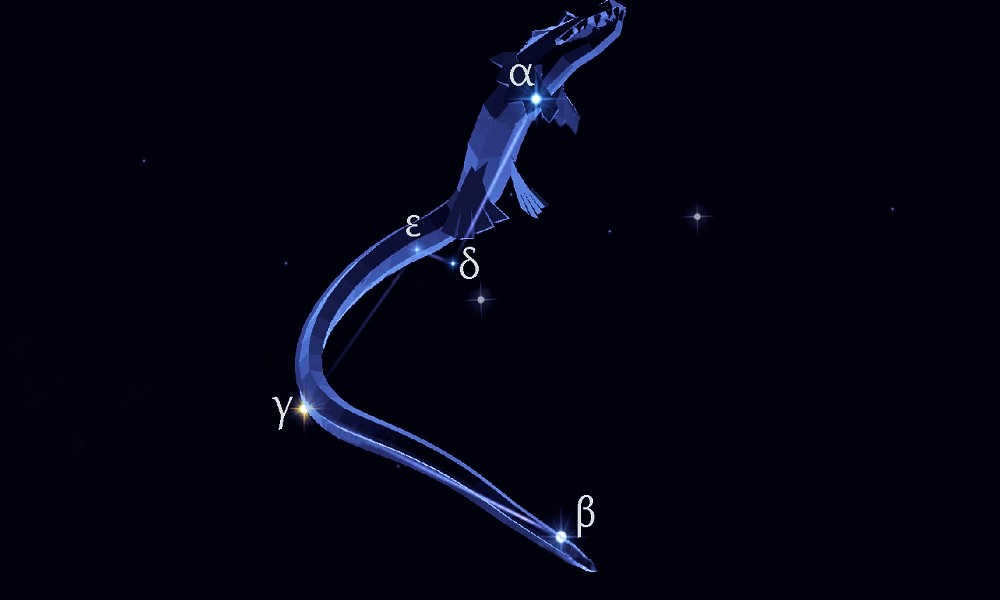
What does the constellation Southern Hydra consist of?
Due to its small size, there are not many notable celestial objects in this region.
Nevertheless, there are a couple of galaxies present. Specifically, the irregular galaxy NGC 1473 and the spiral galaxy NGC 1511.
There is also a globular cluster of stars that can be observed. It goes by the name NGC 1466. Surprisingly, it contains a significant number of variable-type stars known as RR Lyrae.
Another object worth mentioning is IC 1717. Although it was once classified as a deep space object, it is actually quite small, elongated, and dim.
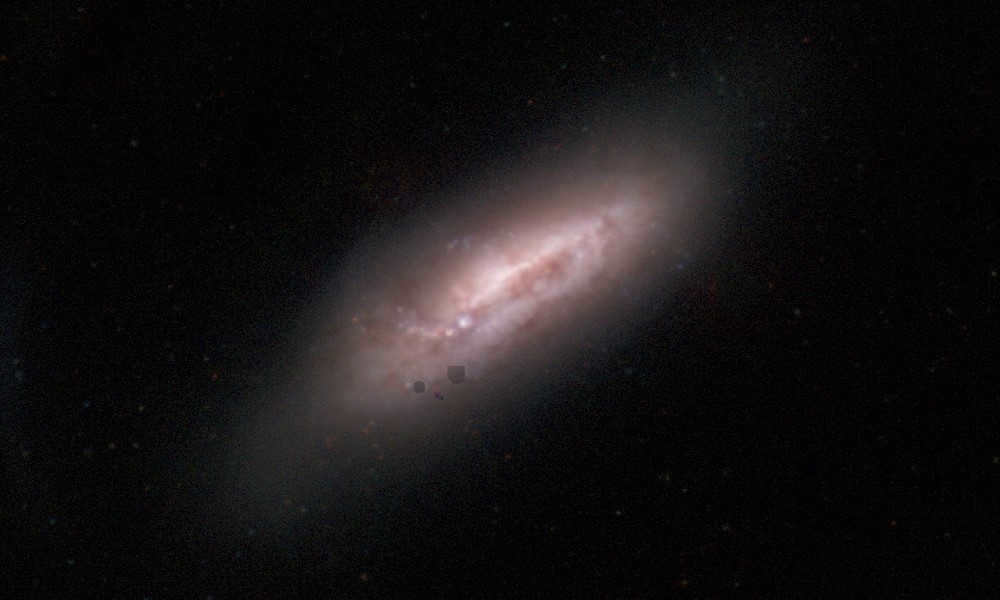
Astronomical Observation
The visibility of the Southern Hydra constellation is limited to latitudes ranging from +8 to -90. It can be fully observed only in locations south of +8. Unfortunately, residents of Russia do not have access to this constellation.

It is a well-known fact that the constellation Hydra is widely recognized as the largest in the entire sky. This is primarily due to the fact that it covers an impressive area of 1303 square degrees.
Furthermore, it is important to mention that Hydra can be found in the Southern Hemisphere, adding to its allure. Additionally, it shares borders with numerous renowned constellations, such as Virgo, Cancer, Leo, and many others.
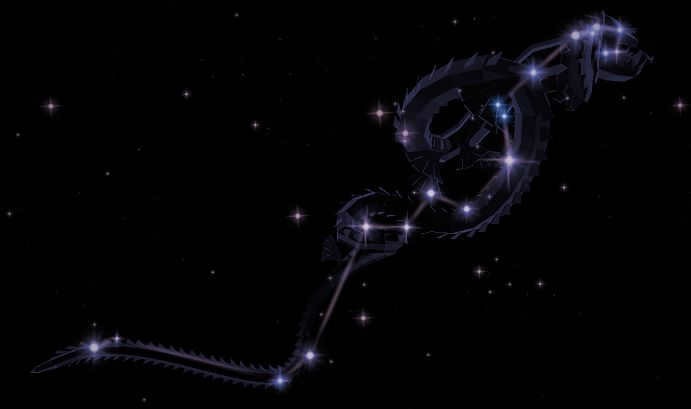
The Hydra constellation is not just the biggest, it’s also the longest in the night sky. This group of stars has been known to humans since ancient times. For instance, Ptolemy wrote about it in his works.
The tale of Hydra
Interestingly, when translated from Latin, the name of the region in question is rendered as a water snake.
As is common with constellation names, the moniker Hydra has a mythological origin. According to ancient Greek lore, the deity Apollo possessed a pet raven. One fateful day, the bird went missing while on a water-fetching errand. To make amends, the raven presented its patron with a serpent. However, Apollo became enraged and flung both the raven and the water vessel into the heavens. Thus, the constellations Hydra and the Raven were born.
Furthermore, the Hydra constellation is often linked to the monstrous creature that Heracles vanquished in his final feat.

The primary luminaries of the constellation
Despite being the largest, the Hydra constellation does not boast a significant number of luminous stars. Nonetheless, this does not impede its observation.
Alpha — Alphard. It is an orange giant that surpasses the Sun in size by 50 times and matches it in mass with three solar masses. According to scientists, it is estimated to be around 420 million years old.
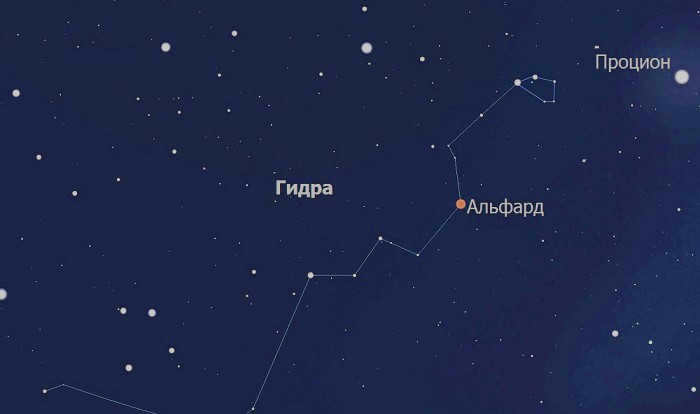
The star known as Gamma is a yellow giant that bears a resemblance to Alpha but is 13 times larger than our own sun. It has been estimated to be around 372 million years old.
Zeta is a massive star with a mass of 4.2 times that of our sun. This bright object has been in existence for about 400 million years.
Beta is a binary star system, consisting of a giant star as the primary component and a B-class variable star as its companion.
27 Hydra is a yellow giant star.
The constellations of Sigma – Minchir and Nu are classified as orange giants. However, the Pi section, although similarly colored, is in a transitional stage between being a subgiant and a giant star.
R Hydra is known as a red giant. It is also classified as a pulsating variable star of the Mira type in the final phase of its life cycle.
V and U Hydra are both examples of prominent variable stars. Additionally, they are considered to be luminous stars. Furthermore, the V constellation is notable for being one of the reddest stars, with a B-V index of +5.5. As a result, these stars can be observed without the need for a telescope.
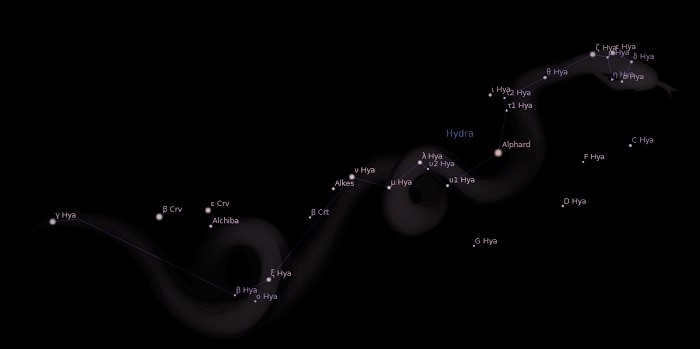
Epsilon is a complete set of stars. It is currently known that it consists of four celestial bodies. These stars are connected to the main binary system through the force of gravity. Surprisingly, their orbital period varies and can range from 15 to 10,000 years.
Delta is characterized by a binary system that is brighter than the Sun. Additionally, it represents a white dwarf star.
What other celestial bodies make up the Hydra constellation
M 48 is a cluster of stars that was first identified by Charles Messier. Researchers estimate that it is approximately 300 million years old. What is noteworthy for us as stargazers is the fact that it can be located without the need for any telescopic equipment.
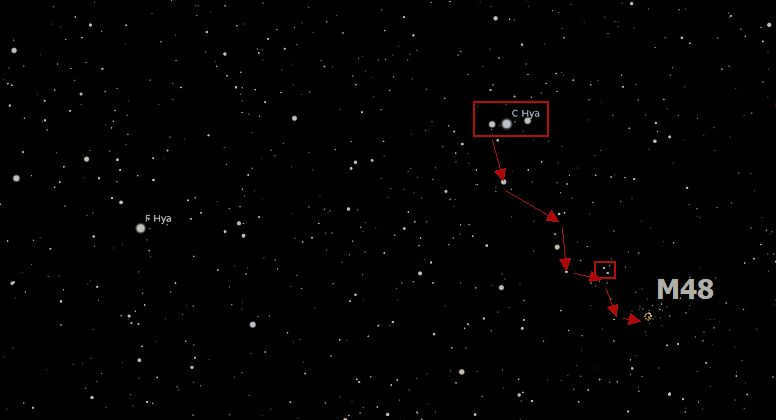
M 68 is a globular cluster that was also discovered by Messier.
The Hydra super cluster is a galaxy cluster that consists of nearly 160 systems, covering a distance of 10 million light-years. Notably, this region is home to the largest elliptical galaxies (NGC 3309 and NGC 3311) and spiral galaxy (NGC 3312). Furthermore, a distinctive characteristic of this cluster is the abundance of dark matter it contains.
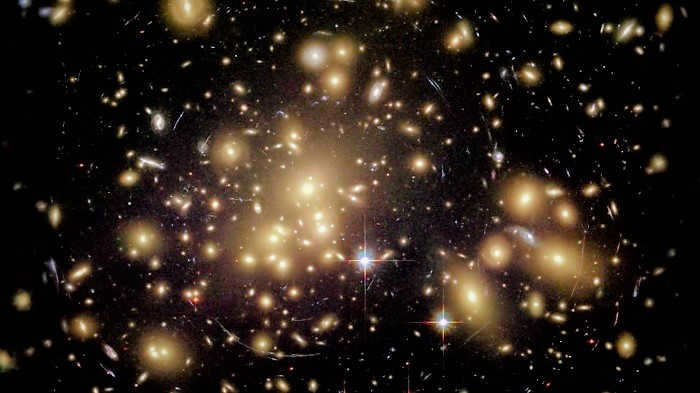
M 83, also known as the Southern Spiral, is a spiral galaxy that bears a striking resemblance to the famous constellation, the Big Dipper. Notably, it is one of the nearest star systems to us and boasts the most luminous nexus. Therefore, locating it in the celestial sphere should prove to be a relatively effortless task.
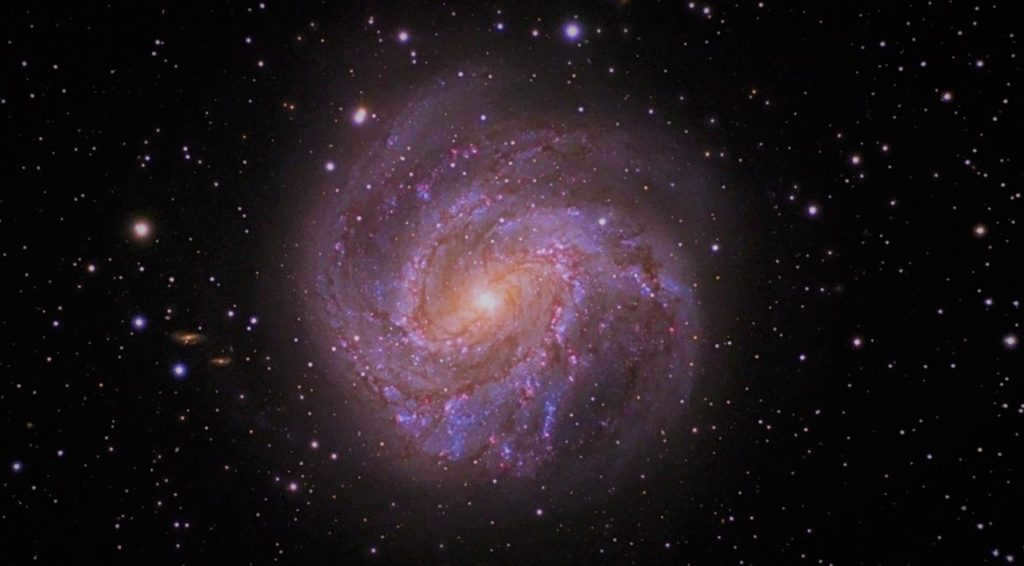
NGC 3242, also known as Jupiter’s Ghost, is a planetary nebula that was first detected by William Herschel in 1785. It is also commonly referred to as The Eye Nebula. Astronomers are particularly thrilled about its visibility and find it easily observable.
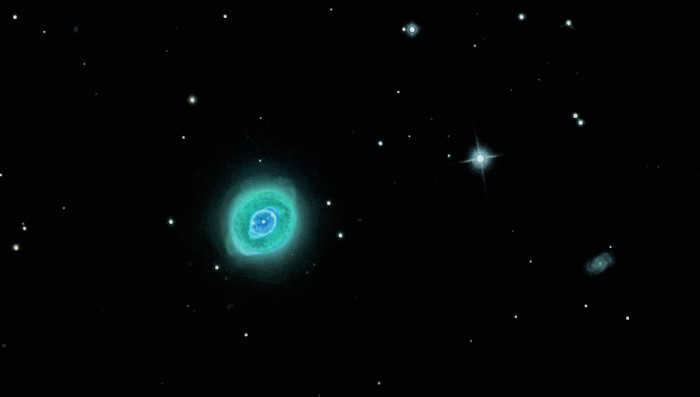
NGC 3109 is an irregular conjunction of luminaries that is classified as a spiral galaxy. What makes it even more fascinating is its connection to another dwarf irregular galaxy called The Pump. Additionally, NGC 3109 is home to a significant number of planetary nebulae and dark matter.
NGC 3054 and 3621 are both spiral galaxies. NGC 3054 is an intermediate system, while NGC 3621 stands out for its lack of a convex center, making it a disk star cluster.
NGC 5694 is a globular cluster and one of the oldest formations of its kind in the Milky Way. Remarkably, it has been estimated to be approximately 12 million years old.
Moreover, the Hydra constellation contains several spiral galaxies, including ESO 510-G13, NGC 4980, NGC 5078, NGC 3314 (a pair of stellar systems), and NGC 3314a.
Which asterism is concealed within the Hydra constellation?
Within this region, specifically on its western side, lies the renowned asterism known as Hydra’s head. It is also referred to as the Pearl Necklace or the Scarlet Bird. In reality, it takes the form of an irregular polygon and consists of five prominent stars.
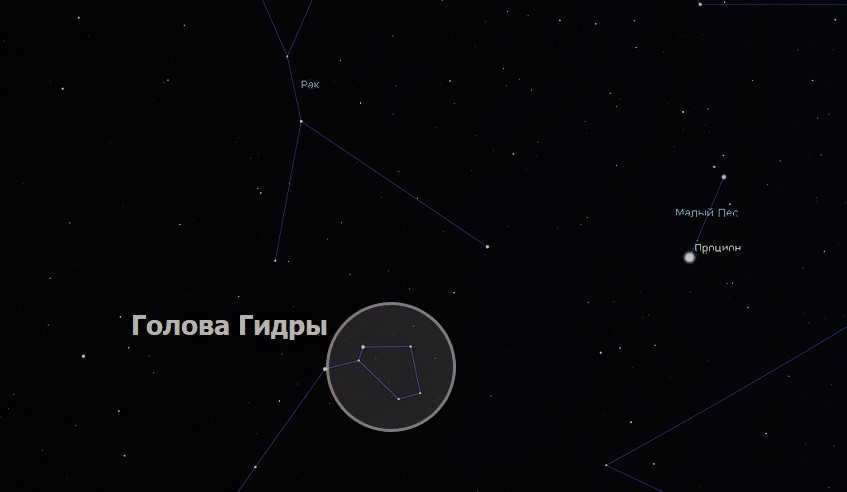
When to Observe
According to seasoned stargazers, the prime period to witness the Hydra constellation is during the months of February and March. In other words, it can be deemed as a springtime celestial formation.
If one gazes from the southern region of Russia, the Hydra constellation can be fully seen. However, from other vantage points, it may only be partially visible. Notwithstanding, this does not hinder a delightful observation of this stellar phenomenon.

The constellation Hydra, which has been recognized since ancient times, is the most extensive and longest constellation in the southern hemisphere of the celestial sphere. Libra, Cancer, and Virgo are the neighboring constellations of Hydra in the night sky.
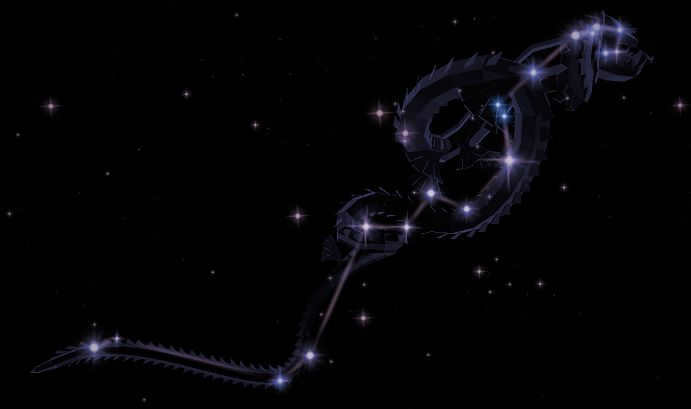
The constellation Hydra contains a variety of fascinating celestial objects, such as young stars, brown dwarfs, open and globular clusters, a spiral galaxy, the Jupiter planetary nebula, and the radii of two meteor streams.
Discovery History
Hydra was first documented on Ptolemy’s maps, which depicted 15 constellations from the southern sky. The origin of its name is surrounded by several legends, with the most well-known being linked to the ancient Greek myth of Heracles and his 12 labors, one of which involved defeating the Lernaean hydra – a massive creature with nine heads.
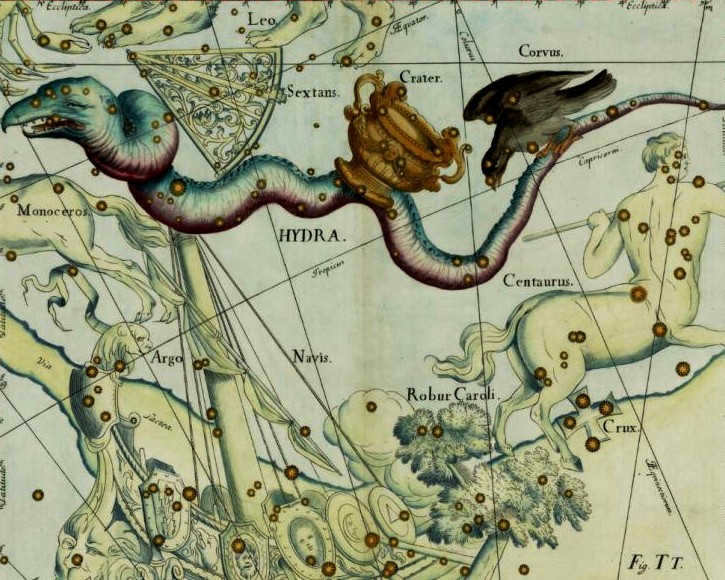
Heracles enticed the hydra out of its hiding place by shooting flaming arrows, and proceeded to sever its heads, only to have new ones instantly sprout in their place. But with the help of his loyal charioteer Iolaus, they managed to defeat the monster, and their arrows became soaked in its poisonous blood.
The second legend recounts how the god Apollo dispatched his raven to fetch water from a spring. The lazy bird not only took an incredibly long time on its journey, but also accidentally scooped up a snake along with the water.
Enraged, the god hurled the bowl into the sky, along with the bird and the serpent. As a result, the constellations Raven, Cup, and Hydra appeared in the Southern Hemisphere.
In ancient times, the three constellations that were part of the same mythological tale – Hydra, Raven, and Cup – were often regarded as one. However, they were referred to as Anguis, Avis, Crater, and were never depicted separately.
Claudius Ptolemy included Hydra in his catalog “Almagest” as a distinct constellation. The astronomer named it the Water Serpent.
Size and location
Hydra is known for being the largest constellation, covering an impressive area of 1,303 square degrees. Its size sets it apart from the other 88 celestial objects. Hydra is situated in the SQ2 quadrant and can be observed within latitudes ranging from +54 to -83C. It is surrounded by prominent constellations such as Leo, Cancer, Libra, Unicorn, and Cup.
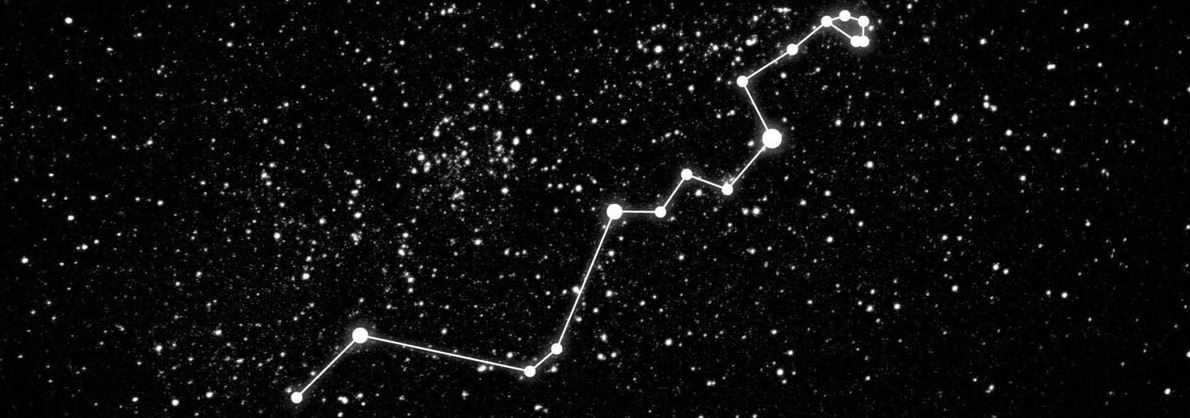
The cosmic entity known as HYDRA, or HYA for short, is represented by its Latin name. The time period for its direct ascent is from 8:05 AM to 2:55 PM, and its declination ranges from -35 to +7 degrees.
HYDRA is associated with various meteor streams, and the best time to observe it is between the months of February and March.
The primary celestial bodies
When visibility is optimal, the unaided eye has the ability to discern a total of 229 celestial bodies that compose the Hydra constellation. These bodies are generally dim and many are located on the outskirts of detectability.
Out of all the celestial bodies within the constellation, there are 14 that shine the brightest. Among these, there is one with a second magnitude, five with a third magnitude, and eight with a fourth magnitude. These stars form a lengthy, meandering line that stretches from the east to the west, resembling the shape of a colossal serpent. The formation of its head is composed of a cluster of faint stars.
The most notable celestial bodies of Hydra:
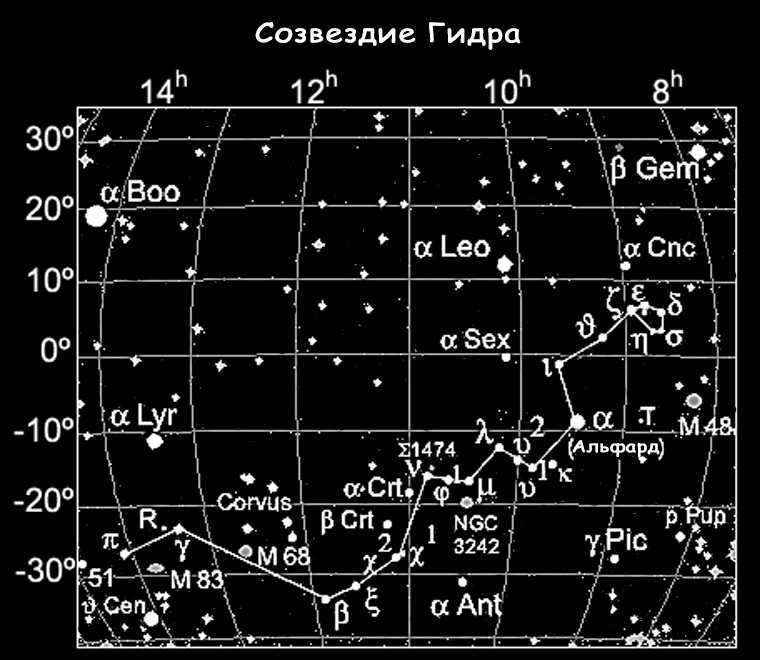

- Beta Hydra – is a binary star system. It is dominated by a giant star and accompanied by a B-class variable star.
- Hydra Zeta – is a giant star with a mass of 4.2 times that of the Sun. It is a highly luminous object, already 400 million years old. It is located 284 light-years away from the solar system.
- Delta Hydra – A binary system that is brighter than the Sun. It is a white star of class A2IV-V (between subgiant and dwarf). Its apparent magnitude is 4.83. It is situated 284 light-years away from the solar system.
- Sigma Minchir and Nyu constellations are categorized as orange giants. However, the Pi section, although it has a similar color, is in the process of transitioning from a sub-giant to a giant. Nu of Hydra is an orange giant (K3III) with a visual magnitude of 4.75 and a distance of 339 light years.
- Gamma Hydrae: A bright yellow giant star (G8) located 132 light-years away from Earth. It has a magnitude of 3.0. Gamma Hydrae is the most fascinating celestial object in the Hydra constellation that can be seen without the aid of a telescope. It falls under the third magnitude category of stars. In close proximity to Gamma Hydrae, there is a long-period variable star known as R Hydrae. This red giant star shares similarities with the brilliant variable star Mira Ceti. R Hydrae experiences variations in brightness over a period of 387 days. When it reaches its peak brightness, it can be seen with the naked eye at a magnitude of 3.5. However, during its dimmest phase, it can only be observed using a telescope, with a magnitude of 11. R Hydrae has an average velocity of about 50 km/s and its mass is approximately 400 times that of Earth.
- Al fared is the first star in the Hydra constellation. Its name originates from Arabic and means “lonely”. It is a massive orange giant with a visual magnitude of 2.0, located 177 light-years away from Earth. The star’s mass is three times greater than that of the Sun, and its radius is nearly 50 times larger. Alfard belongs to the spectral class K3 II-III and has a surface temperature of approximately 4100 K. With an age of 420 million years, it is an intriguing celestial object. Notably, Alpha Hydra is a triple system, featuring an additional double star that orbits at a distance of 210 angular seconds from the primary star. The components of this double system are K 2 class stars with a stellar magnitude of approximately 9.5m. The angular separation between the objects in this system amounts to 238 seconds of arc.
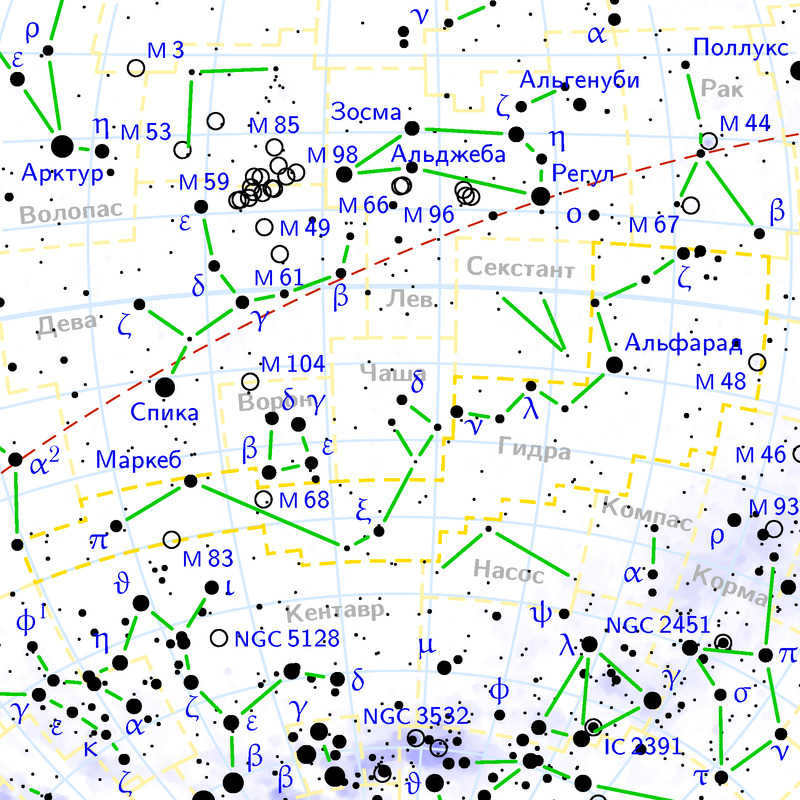

- 27 – A pair of visually striking yellow and white stars. Its distance from Earth is approximately 202 + 244 light years.
- 54 – A binary system that can be easily observed using a small telescope. It is located at a distance of 55 light years from Earth.
- V and U Hydras – These are variable stars that exhibit changes in brightness and can be seen with the naked eye. Additionally, the V star in the constellation is one of the reddest stars, with a B-V index of +5.5.
- Eta-2 Southern Hydra – a giant star (G8.5III) with a visual magnitude of 4.68 and a distance of 219 light-years. In 2005, a planet called Eta South Hydra b, with an orbital period of 711 days, was discovered orbiting around it.
- HD 10180 – a yellow dwarf star (G1V) with a significant exoplanet system. It has a visual magnitude of 7.33 (149% brighter than the Sun) and is located 127 light-years away. Its mass is 6% greater than the mass of the Sun and its radius is 120% of the solar radius. It has a rotation period of 24 days and is estimated to be 7.3 billion years old. The star is known to have a wide planetary system consisting of 7 planets (or 9).
- The Southern Hydra constellation is situated in the southern hemisphere. The term “Hydrus” in Latin means “male water snake”.
- It is also known as the “lesser water serpent”, which distinguishes it from the larger Hydra constellation located between Eridanus, Orion, and the Milky Way. The Southern Hydra can be found between the two Magellanic clouds, Eridanus, and the southern celestial pole.
- The Southern Hydra was one of the first constellations identified by the Dutch astronomer Peter Plancius in 1597. He based his observations on the accounts of sailors Frederick de Hautman and Pieter Dirkszoon from the late 16th century. Johann Bayer included it in his Uranometria in 1603.
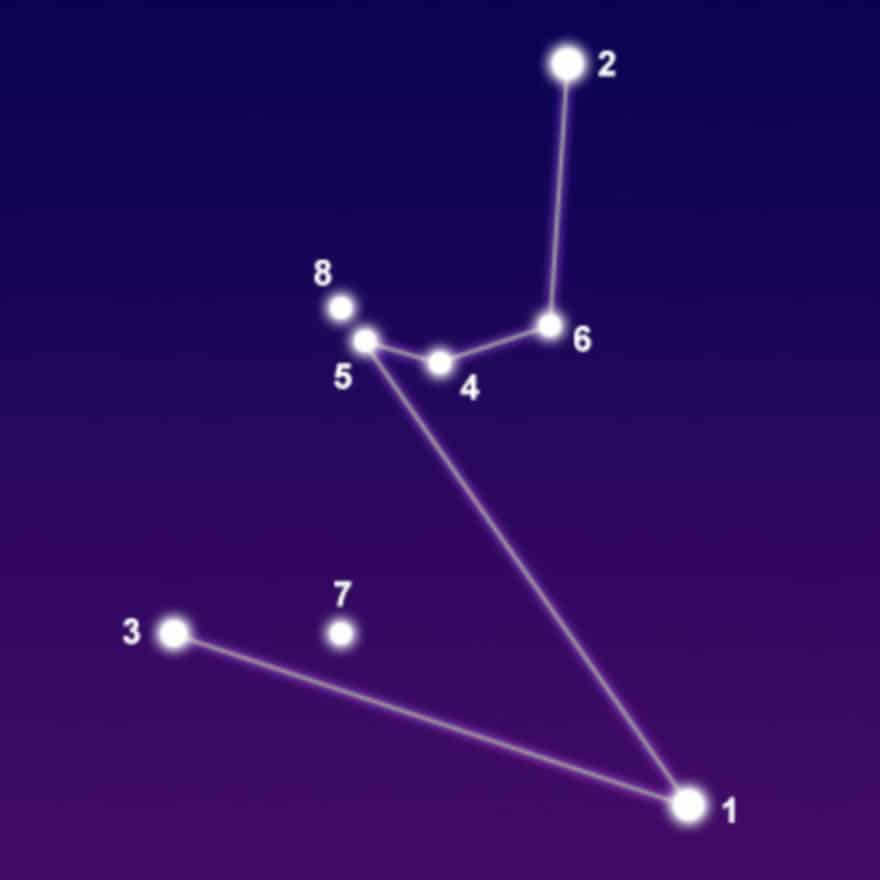
Facts, position and map
The constellation South Hydra covers an area of 243 square degrees, making it the 61st largest constellation in size. It occupies the first quadrant in the southern hemisphere (SQ1) and can be observed at latitudes ranging from +8° to -90°. South Hydra is bordered by the constellations Goldfish, Eridanus, Phoenix, Toucan, Grid, Octant, Table Mountain, and Clock.
This constellation is home to 4 stars with planets, but does not contain any Messier objects or meteor streams. The brightest star in South Hydra is Beta South Hydra, which has an apparent visual magnitude of 2.80. It is also the closest star to us within the constellation, located 24.38 light-years away. Beta South Hydra is part of the Johann Bayer group, which includes the constellations Chameleon, Goldfish, Indian, Fly, Peacock, Phoenix, Flying Fish, Toucan, Crane, and Bird of Paradise. Take a look at the star map to see the diagram of the South Hydra constellation.
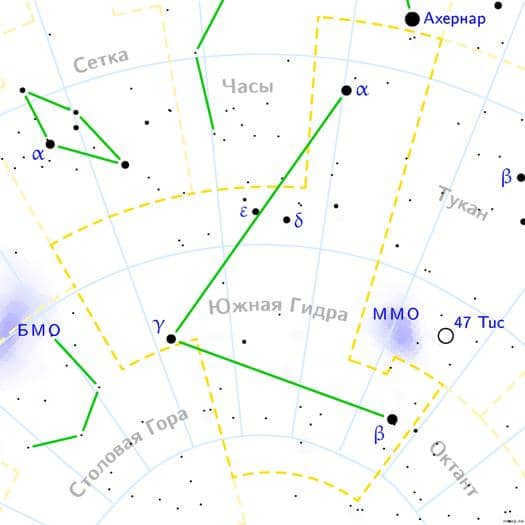
Origin of the constellation
The Southern Hydra does not have any mythological background. Due to its location in the southern hemisphere, it was not known to the Romans and Greeks. It was first observed by Dutch sailors, who identified the shape as that of sea serpents.
The French astronomer Nicolas Louis de Lacaille named it “l’Hydre Mâle” to highlight its relationship to Hydra. He included it in his planetary system in 1756. He also assigned several stars to the constellations Tucana, Horologium, Octans, and Reticulum. In Bayer’s Uranometria (1603), the tail of the Southern Hydra extended to the star Lambda Octantis, which is now part of the constellation Octans.
Notable Celestial Bodies
Discover the prominent celestial bodies in the constellation South Hydra situated in the southern hemisphere. Gain access to comprehensive descriptions and detailed information about each.
Beta South Hydra, the leading star in terms of brightness, is a yellow subgiant (G2 IV) with an apparent visual magnitude of 2.80. It is located at a distance of 24.33 light-years. With a mass equivalent to 108% of the Sun’s mass and a radius that is 181% of the Sun’s radius, Beta South Hydra shines 3.494 times brighter than our own star.
Being one of the oldest stars in close proximity to our solar system, Beta South Hydra holds significant scientific interest. Additionally, it currently holds the distinction of being the closest subgiant star to our system. Historical records indicate that in 150 B.C., Beta South Hydra was positioned 2 degrees from the south celestial pole. Presently, it serves as the nearest bright star to the south pole. Although in 2002 there were suspicions of a Jupiter-like satellite orbiting the star, confirmation of its existence is still pending.
Alpha South Hydra (also known as Hydra’s Head) is a subgiant star with a yellow-white color. It has a visual magnitude of 2.90 and is located approximately 71.8 light-years away. This star is the second brightest in the constellation and can be found southwest of Ahernar, which is the ninth brightest star in the sky and is located in the constellation Eridanus. Alpha South Hydra is 80% larger than our Sun, twice as massive, and 32 times brighter. It is estimated to be around 810 million years old.
Southern Hydra Gamma, on the other hand, is a red giant star with a luminous appearance. It belongs to the M2III spectral class and has an apparent magnitude of 3.24, making it the third brightest star in the constellation. This star is located at the southeastern apex of a triangular asterism. Its distance from us is approximately 214 light-years. In terms of brightness and size, Southern Hydra Gamma is quite impressive, being 655 times brighter than the Sun and 60 times larger in radius.
Delta South Hydra is a white dwarf star with a spectral classification of A3V. It has an apparent visual magnitude of 4.08 and is located approximately 140 light-years away from us.
Eta-2 South Hydra is a giant star (G8.5III) that shines with a yellow color and has a visual magnitude of 4.68. It is located 219 light-years away from us. In 2005, scientists discovered a planet called Eta South Hydra b, which orbits around this star and takes approximately 711 days to complete one orbit.
Nu of South Hydra is another giant star (K3III) that emits an orange hue and has a visual magnitude of 4.75. It is situated at a distance of 339 light-years.
Zeta South Hydra is a white star belonging to the A2IV-V class, which falls between the subgiant and dwarf categories. Its apparent magnitude is 4.83, and it is positioned at a distance of 284 light-years from our solar system.
GJ 3021 is a binary star system that can be found 57 light-years away from us. The combined visual magnitude of these stars is 6.59.
GJ 3021 A is a star that closely resembles our Sun. It is categorized as a yellow dwarf (G6 V). In the year 2000, astronomers detected a planet orbiting this star, known as GJ 3021 b. This exoplanet has a mass similar to that of Jupiter and is about 3.37 times larger. It completes one orbit around its star every 133.71 days.
GJ 3021 B is a red dwarf star (M4).
HD 10180 is a G1V yellow dwarf star with an apparent visual magnitude of 7.33, making it 149% brighter than the Sun. Situated 127 light-years away from us, it has a mass 6% greater than that of our Sun and a radius 120% of the solar radius. It takes 24 days for HD 10180 to complete one rotation and it is estimated to be around 7.3 billion years old. This star is also known for its extensive planetary system, which consists of 7 (or possibly 9) planets, making it the largest exoplanet system discovered so far.
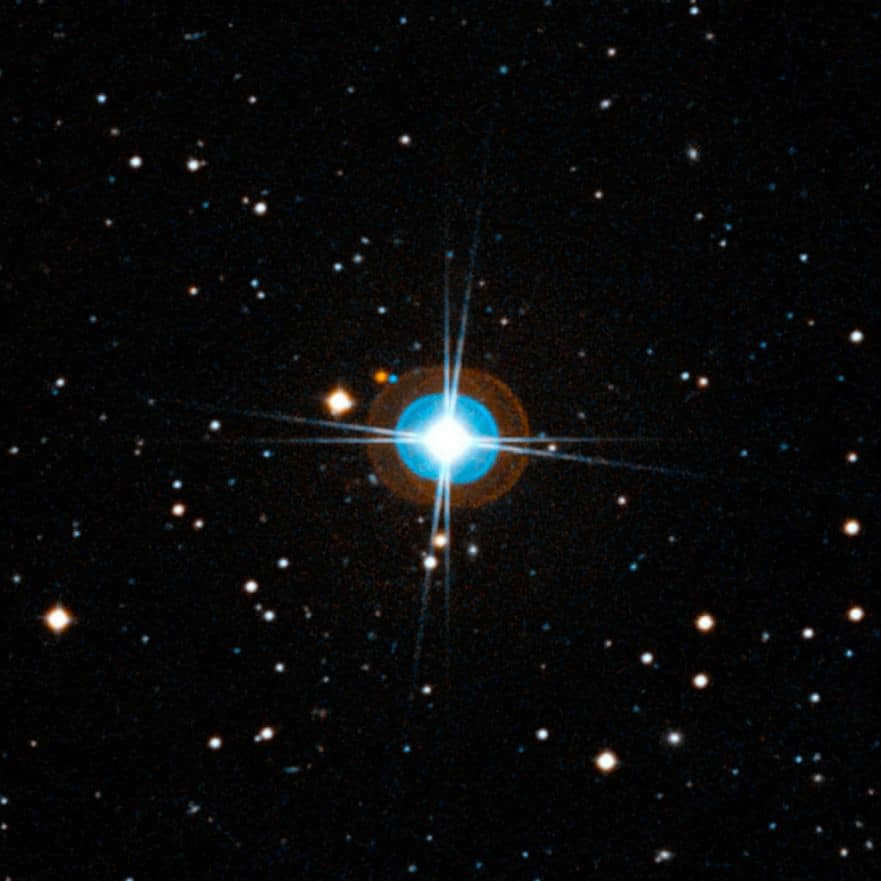
Objects in the sky
IC 1717 – was discovered by Danish astronomer John Ludvig Emil Dreyer. Dreyer described it as a very small and faint, elongated object located near the yellow giant star Eta-2 South Hydra. The coordinates are 01h: 32m: 30s (right ascension), 67° 32'12" (declination). However, nothing was found at this location. It cannot be a supernova because it would have destroyed the planet in Eta-2 South Hydra, so it is believed that this is where the planet collapsed and Dreyer observed the trace of its last orbit.
NGC 1511 is a spiral galaxy with a visual magnitude of 11.0. It was discovered by John Herschel on November 2, 1834.
Discovered by John Herschel in 1834, NGC 1466 is a globular cluster with an apparent visual magnitude of 11.4 and located 14,000 light years away. One of its remarkable features is the presence of numerous RR Lyrae variable stars, with the brightest one having a magnitude of 19.
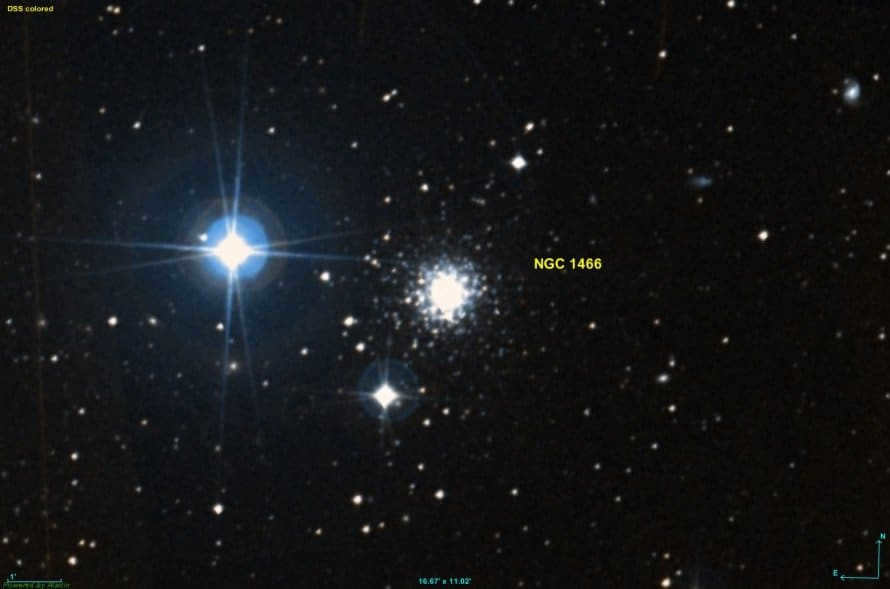
NGC 1473 is a type of galaxy that does not have a regular shape, and it has a visual magnitude of 13.0 when observed. It was first discovered by the astronomer John Herschel in November 1834.
If you are interested in exploring the Southern Hydra constellation in the southern hemisphere in more detail, we offer you the chance to not only view our photos but also access 3D models and an online telescope. You can also use a star map to aid in your own personal search.
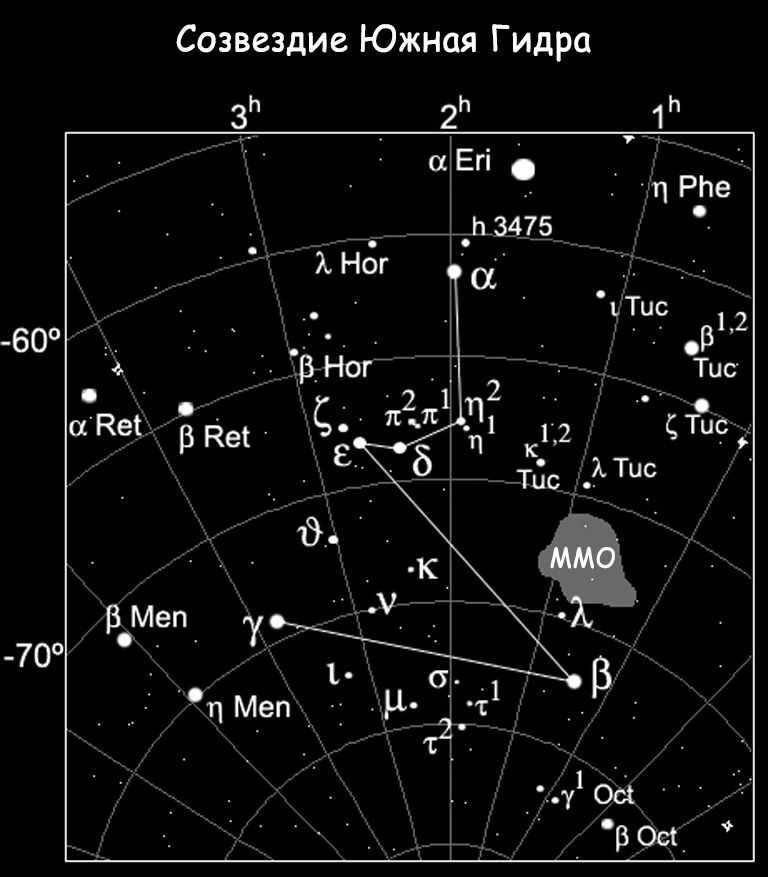
The southern hemisphere of the sky harbors numerous celestial objects that were previously unknown to inhabitants of the northern hemisphere of the Earth.
Overview
The Southern Hydra constellation consists of a total of 32 stars that can be observed without the aid of a telescope.
Interestingly, all the stars in the constellation have a magnitude no brighter than three, and none of them have been given their own unique names. Of particular interest to stargazers are the prominent stars of the Southern Hydra constellation: beta, alpha, and gamma, as well as the small elliptical galaxy NGC 1473 and the nebula NGC 1511.
Place
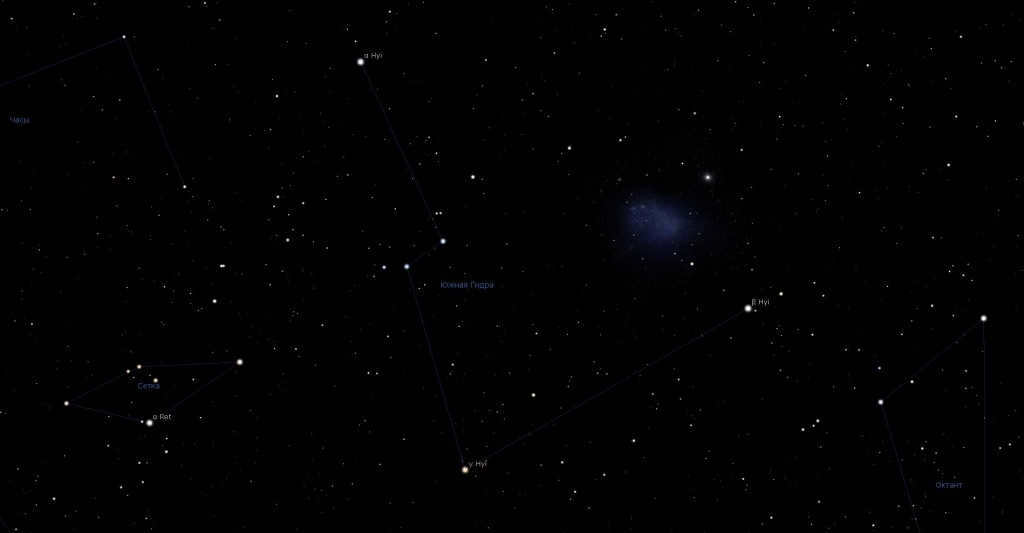
Constellation South Hydra can be viewed in the Stellarium software for planetariums.
The neighboring constellations of South Hydra are Goldfish, Clock, Table Mountain, Phoenix, Toucan, Setka, Octanthus, and Eridanus. This particular constellation can only be fully observed if you are below latitude 7°. To locate it, you need to first locate Ahernar, a bright star that belongs to Eridanus. Below Ahernar, you will find three prominent stars of the Southern Hydra arranged in a distinct triangle, which will guide you to the desired object.
The Southern Hydra’s Beta Version
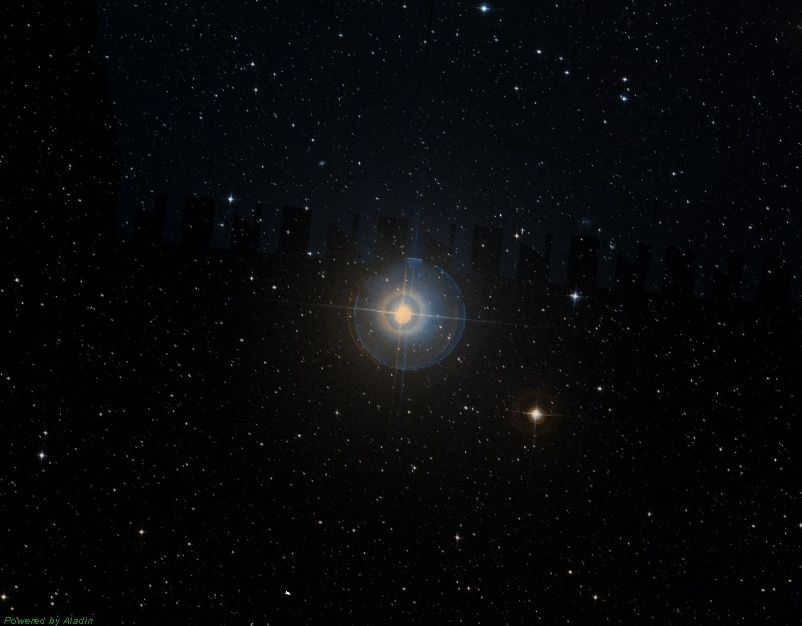
The most prominent star within the constellation has a visual magnitude of 2.82. It belongs to the beta class of stars and is located at a distance of only 24.4 light-years from Earth. The star’s parameters closely resemble those of our Sun, with a mass of 1.1 times and a diameter of 1.46 times that of the Sun. This star is relatively older, estimated to be around 6.7 billion years old. By studying this star, scientists can gain insights into the future of our own Sun. Researchers have discovered that this object has the ability to produce sound waves, with a period of 17 minutes. It is interesting to note that our Sun also possesses a similar ability, but it produces sound waves more frequently, at intervals of every 5 minutes.
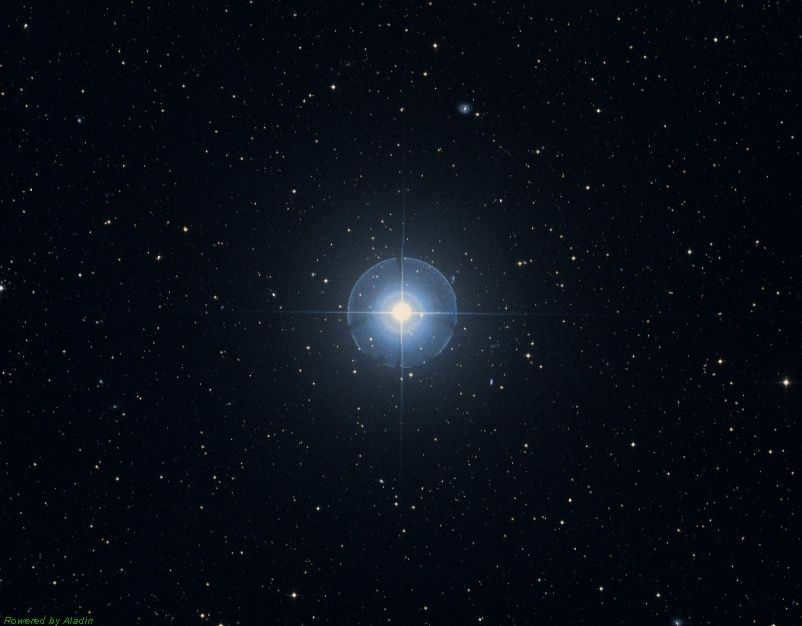
The subgiant Alpha of the constellation is situated at a distance of 71.8 light-years from Earth. Akmaf, the South Hydra’s star, is approximately twice as massive as our Sun. It has an apparent magnitude of 2.86 and its surface temperature is estimated to be around 7077 K.
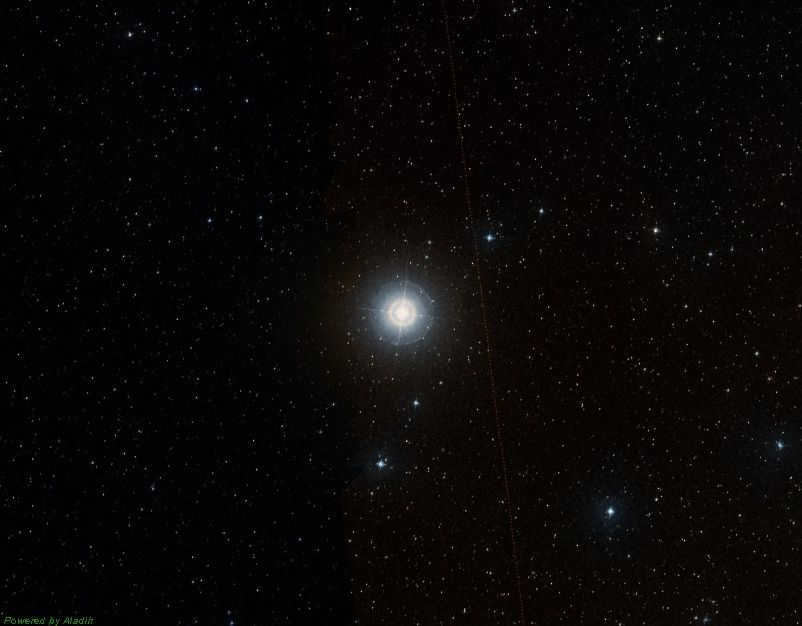
The star known as Gamma of South Hydra is located at a distance of 214 light-years from our solar system. This celestial giant is classified as a red giant and has an apparent magnitude of 3.26. It is approximately 60 times larger than our Sun, but its mass is only 1.5 to 2 times greater. Scientists estimate that its surface temperature is around 3820 K.
Origin of the celestial arrangement


